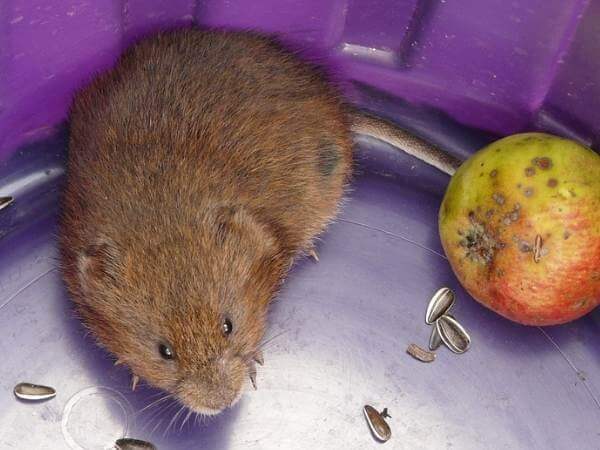Vole Insect Control Demystified: A Full Introduction of Invasion Discovery and Effective Therapy Methods
From refined signs of problem to the implementation of targeted control measures, browsing the realm of vole pest control demands a mix of understanding and strategic activity. In this extensive summary, we will check out the nuances of vole infestation detection and dive right into the realm of reliable therapy techniques that can guard your spaces from these below ground problems.
Comprehending Vole Habits Patterns
Understanding the detailed actions patterns of voles is crucial for effectively implementing bug control procedures in residential and agricultural settings. Voles, small rodents that look like mice yet with stouter bodies, are well-known for their fast recreation prices and voracious hungers for plants. By diving into their actions patterns, parasite control professionals can acquire important understandings into vole choices, susceptabilities, and behaviors.
Voles are mostly herbivores, feeding upon a variety of plants, roots, roots, and light bulbs. They are additionally respected tunnelers, producing fancy underground burrow systems for nesting and foraging. By recognizing these behaviors, bug control professionals can tactically place traps and lure terminals along vole paths and entrance factors, boosting the likelihood of effective eradication.
Furthermore, knowledge of vole habits patterns can aid in developing preventative measures to discourage future invasions. By addressing elements that bring in voles, such as dense plants cover and conveniently obtainable food resources, building owners can make their premises less welcoming to these damaging pests - vole pest control. Finally, an extensive understanding of vole habits is critical in developing reliable and sustainable parasite control strategies
Identifying Indications of Vole Infestation
Effective vole pest control starts with quickly recognizing the indications of vole invasion on buildings. One of one of the most common indicators of vole presence is the existence of surface area runways. These paths are slim pathways through lawn or plants that voles create as they travel between their burrows and food sources. Additionally, vole droppings are another clear sign of problem. Vole droppings are tiny, round pellets that are typically located along their runways or near their burrows.
Along with droppings and runways, munch marks on tree bark and plant life are additionally indications of vole activity. Voles have a practice of gnawing on the bases of trees and hedges, which can cause damage and possibly kill the plants. The visibility of burrow openings in the ground suggests an energetic vole populace. Vole burrow entries are commonly little and found in mulched or grassy areas.
Being alert for these indicators can help homeowner find vole problems early and take proper bug control steps to avoid more damages.
Applying Targeted Control Actions
What specific approaches can be utilized to effectively implement targeted control measures for vole insect administration on properties? Applying targeted control actions for vole insect management calls for a multi-faceted technique that combines both prevention and obliteration techniques. One of the vital approaches is habitat alteration, which includes eliminating vole-friendly environments such as high turf, weeds, and particles near buildings. Installing obstacles like hardware fabric or crushed rock around garden beds and tree trunks can also aid prevent voles.
Trapping is another effective method for regulating vole populaces. Live traps can be tactically positioned along vole runways or delve entrances, baited with peanut butter or apple pieces. Once captured, voles must be humanely removed to a various area to avoid reinfestation.
Rodenticides can be made use of as a last hope for extreme infestations, yet caution has to be exercised to stop injury to non-target animals. It is essential to follow all safety and security standards and policies when utilizing rodenticides for vole control.
Environmentally Friendly and all-natural Remedies
The adoption of eco conscious practices can play a critical role in handling vole populaces without triggering damage to the ecosystem. Natural and environment-friendly treatments use a lasting method to vole parasite vole control control, minimizing using unsafe chemicals and advertising biodiversity in the influenced locations.
One efficient all-natural approach is making use of predator urine or killer decoys. Killers like owls, foxes, and serpents are the vole's natural enemies. By strategically positioning predator urine or decoys around the infested locations, voles might be prevented from working out in those places.
Additionally, planting vole-resistant plants can help in minimizing vole damages. Plants such as daffodils, crown imperials, and Siberian squill are known visit this site to be uninviting to voles and can function as all-natural repellents.
Furthermore, developing physical barriers like cord mesh or gravel around prone plants can prevent voles from accessing them. These barriers can assist shield gardens and landscapes without posturing any danger to the setting or other non-target varieties. By incorporating these environment-friendly and natural solutions, vole problems can be managed properly while maintaining ecological equilibrium.
Long-Term Avoidance Strategies
To sustainably deal with vole invasions with time, executing positive steps is critical for lasting prevention techniques. One efficient technique for long-lasting prevention is habitat adjustment. vole lawn damage. By minimizing thick plants, compost, and mess around buildings, you can make your property less attractive to voles. In addition, mounting obstacles like fencings or underground wire mesh can assist hinder voles from invading your garden or lawn.
Normal tracking of vole activity is crucial for very early detection of any type of signs of problem. Establishing vole catches can assist in managing their population prior to it becomes a full-on infestation. It is also important to seal off any kind of entrance points to frameworks or structures to stop voles from accessing.

Conclusion
Finally, understanding vole actions patterns, recognizing signs of invasion, implementing targeted control measures, making use of all-natural and environmentally friendly remedies, and applying long-lasting prevention strategies are essential action in properly handling vole invasions. By being proactive and taking the required actions to attend to vole problems promptly, people can successfully avoid and regulate vole invasions in their homes.
